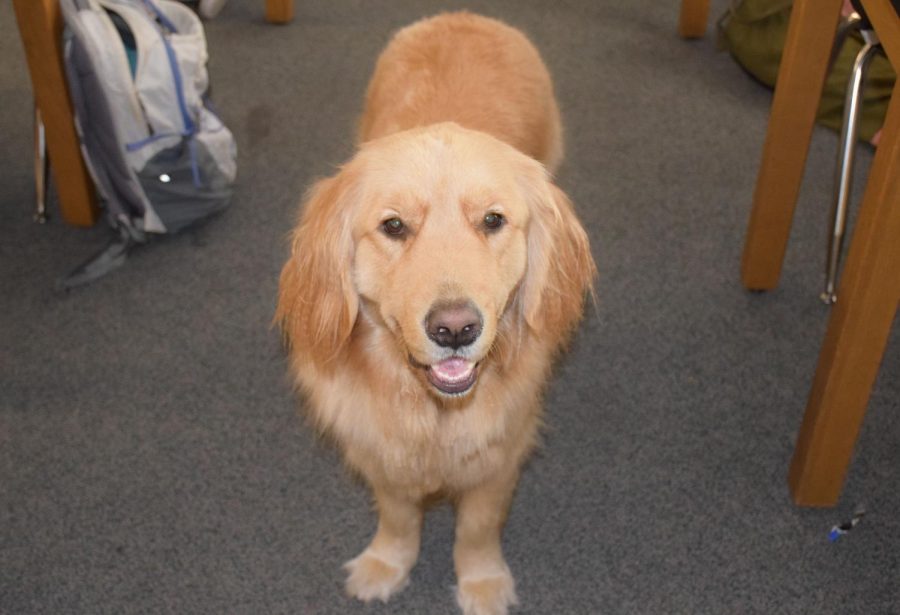Therapy Dogs Positive Additions to Campus
June 4, 2019
Learning center teacher Michelle Alessandria and English teacher Jake Donohoe both registered their dogs as licensed therapy animals, allowing them to bring their dogs on campus.
While some are concerned about the potential distraction the dogs may cause, the numerous studies that prove the effectiveness of therapy animals should outweigh any concerns they may have about the animals that have been decreasing student stress for 2 years now.
For instance, after the 1st formal research involving therapy animals began in the 1960s, it was concluded that dogs had a significant positive impact on the lives of people. Dr. Boris Levinson found that his patients, especially those with mental impairments or disabilities, were more likely to interact and socialize comfortably with his dog than with other people.
Alessandria began bringing her dog Ava to school because she believed that the animal would have a positive effect on her special education students. Alessandria registered Ava as a therapy dog through a program at the Animal Rescue Foundation (ARF) in Concord.
Sophomore Brock Zamanian believes the dog’s presence is beneficial. “Whenever I’m feeling stressed out or feeling down I can just pet Ava and she just calms me down,” said Zamanian, 1 of Alessandria’s students.
I too have seen 1st-hand the impact that Ava has made on Alessandria’s students, as I was a peer tutor in her class last year. I noticed a difference in the students immediately as she began bringing Ava to school.
Students who once spent their short breaks on their cell phones now spent them in the fresh air walking the dog and in conversation with their classmates. They returned to class refreshed and ready for the next assignment. Ava provided comfort during times of stress, arduous study sessions, and times of discouragement.
A canine in the classroom is also beneficial for Donohoe’s students.
“[Otis] is always in his cage during lecture, so he doesn’t really distract anyone, but if we have silent reading or work time, he just kind of wanders around class and we can pet him as we work. He’s just very sweet and calming,” said Donohoe’s student sophomore Sophia Webster.
Webster doesn’t believe any students in her class are uncomfortable or disadvantaged by Otis’s presence. Webster said, “As far as I know, no 1 is allergic to Otis or is afraid of him or anything like that. We all really enjoy having him in class.”
“He is definitely somebody that reduces anxiety,” said Donohoe. “He runs through the class during exams and students don’t give him a lot of attention but just his presence or petting him really calms their nerves.”
As far as I could tell, my taking pictures during class was more distracting than Otis or Ava ever were to students. Students would quietly drop a hand down when they heard the dog approach and pet it, without removing their eyes from their work or computer screen.
However, Donohoe is “very cognizant” that his presence on campus can be a distraction to other students, which “isn’t fair for him to pull attention from what other teachers are doing.”
To be mindful, Donohoe doesn’t let students walk him outside of class and admits he does not get a lot of time to spend outdoors during the school day besides a few bathroom breaks close to her room.
But these walks can still be a huge help for students. Taking Ava on a short walk “gives [my students] freedom to reduce that anxiety and that stress,” said Alessandria.
It is clear that Otis and Ava contributed positively to Donohoe and Alessandria’s classrooms. The idea that these animals are a distraction is a myth.


